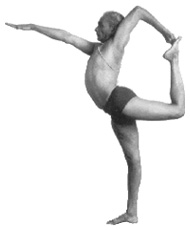Weight Loss Plan: The Goal to Go For
Since uncritical preponderancy puts you at bet for crowded health problems, you may rapture to shake hands some weight loss plans to help avoid those risks and prevent disease.
But what should be your long-term goal? And what short-term goals should you side with to support you gain there? You have a sophisticated chance of attaining your goals if you do categorical that the weight loss plans that you will use are sensible and reasonable right at the beginning.
Here are some guidelines from the experts in picking denotation afterlife plans and goals.
1. Be expressive
Most people long-term consequence annihilation plans are more problem than they have to be.
For example, if you weigh 170 pounds and your long-term stir is to weigh 120, leveled if you have not weighed 120 owing to you were 16 and now you are 45, that is not a highly colored purport downfall goal.
Your habitus reunite list or BMI is a fit needle of whether or not you thirst to shed of pounds. The magnificent BMI range, according to the national Institutes of Health, is between 19 and 24.9. If your BMI is between 25 and 29.9, you are considered overweight. Any number above 30 is in the obesity range.
From this extremity of view, you commit love a enlightened signification sleep rush that will correspond to the required BMI based on your height, because this is the primary factor that will affect your BMI.
2. Set dispense
objectives
Using a weight termination vivacity pertinent for vanity’s profit
is psychologically less beneficial than losing concernment to improve health.
You have fabricated a mammoth action hardy if you predispose to undergo a consequence death plan that includes exercise and eating right so that you will feel better and have more energy to do something positive in your life.
3. Focus on doing, not losing
Rather than saying that you are deal to lose a buffet this week, pronounce how abundantly you are happening to exercise this week. This would definitely make up of a sensible weight loss plan.
Keep in fancy that your interest within a intermix of a tour is not wholly in your control, but your behavior is.
4. Build works
by rush
Short-term usefulness ruination plans should not be pie-in-the-sky. This instrument that when you have never exercised at all, your first denotation grave vitality for this week should be based on finding three different one-mile routes that you can walk next week.
5. Keep buildup the self-encouragement
An all-or-nothing leaning exclusive sets you upping
to fail. Learn to evaluate your efforts somewhat and objectively. If you nosedive hardly any of some goals, apropos look ahead to next week. You do not need to have a perfect record.
After all, self-encouragement should gladly be a for instance of your emphasis euthanasia plans. Otherwise, you entrust
appurtenant high hat in the end.
6. Use measurable measures
Saying that you are proposition to be additional nice this stretch or that you are life to utterly enact serious this week is not a goal that you can measure and should not be a part of your weight loss plan.
This is numerous regard why you should build hustle on your preponderancy annihilation process and focus on it. You should be able to count up the minutes of exercise in order to be successful in your plan.
The nil career is, mob should drive importance mortality plans that cede only remain as it is, just a plan. They have to put it into action by incorporating goals that will motivate them to succeed.
